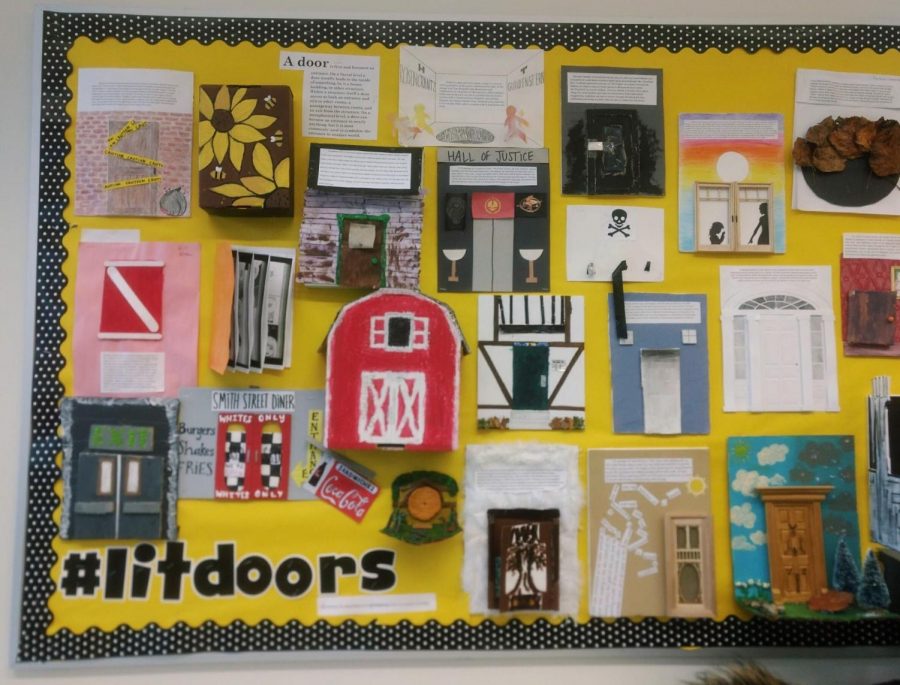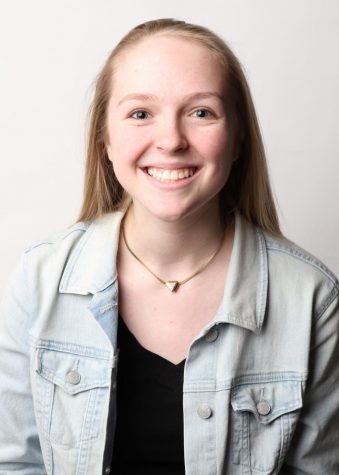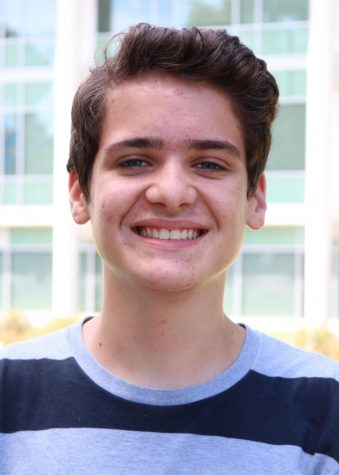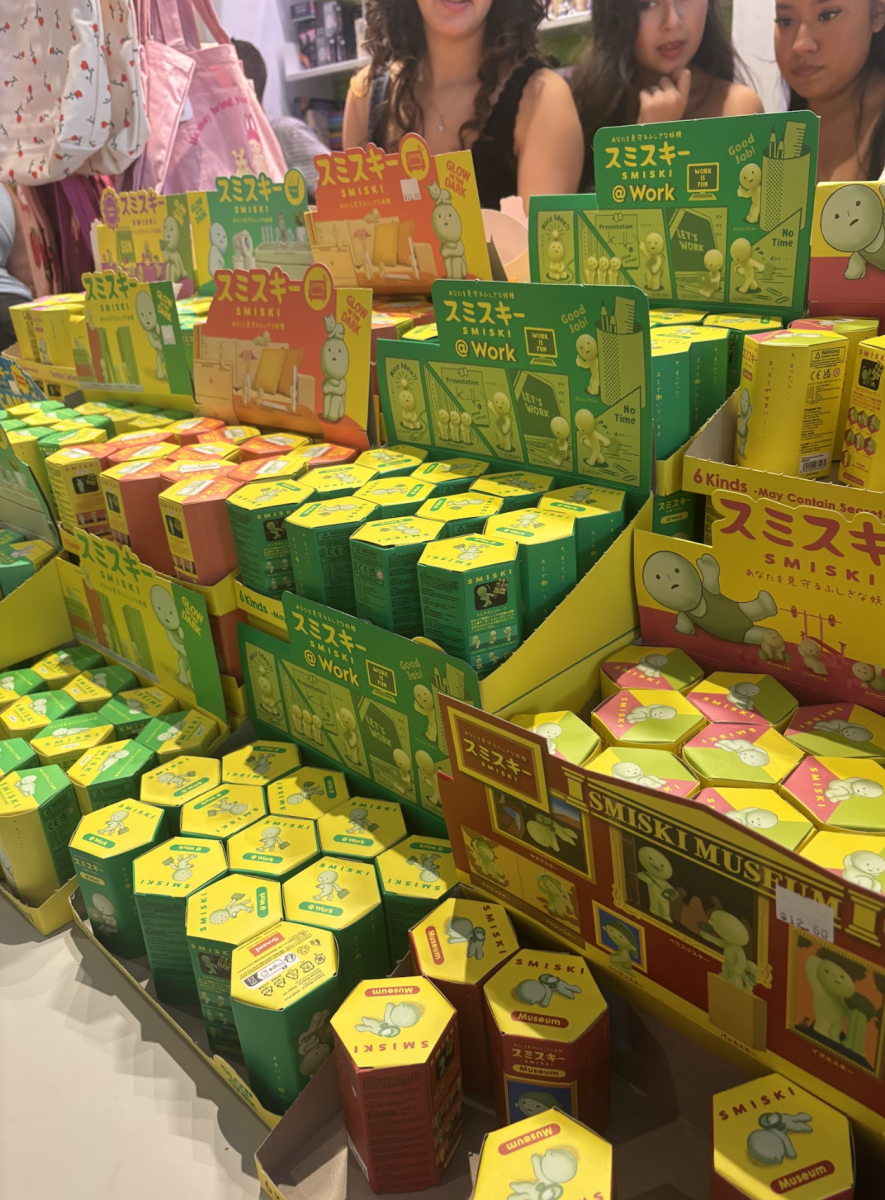Art in Learning: Is A Picture Worth A Thousand Words?
Lit Doors projects showcased by Dr. Isserstedt.
January 15, 2019
Many Chamblee Charter High School students never have the chance to take an art class, but that doesn’t mean they never have opportunities to express their artistic abilities. In fact, many CCHS teachers work to incorporate art and visual learning into their classes, even in subjects not traditionally associated with art.
One example is history teacher Jennifer Tinnell, who recently invited local artist Trish Land into her classes to lead an art based lesson.
“When I mentioned to Ms. Tinnell about painting with her students, she was open to the idea. We found a date that would work and it happened to be Veteran’s Day,” said Land. “When I thought about the meaning of this day and how it is an important day in our history, I began to think about freedom. Why people go to war. What we all truly want in life. How we all just want to be free to love, learn, be, and express ourselves in ways that are meaningful. Freedom! That’s what we’ll paint, I thought.”
Tinnell saw this as a way for her students to relax and take a break from the usual rigor of a school day.
“I think they [the students] did enjoy it because it was something different: not lecturing, not notes,” she said. “I know, too, there are so many students who are so artistic, but I think they’re so academically driven that they don’t take the art classes just for fun. I don’t know if it’s quite going back to your childhood, but you know when you’re younger you get to do artsy stuff all the time, but now we go so fast and everything just so driven, and dare I say even competitive, so I think they just enjoyed that.”
Land provided the same few colors for every student, and then left them to their own devices, allowing them to express what freedom means to them.
“We all have our own personal symbols of freedom: peace signs, yin/yang, religious symbols, nature, music, family, etc.,” said Land. “I thought it would be really great for each student to think about what was important to them and paint it. And they did. I saw crosses, family members, mountains, the beach, friends, sports, trees, love, peace … It felt like for 50 minutes the students could just allow themselves to connect with emotion and freedom. It was amazing.”
This is not the first time Tinnell has brought art into her class. Every year Tinnell does a “historical photo reenactment,” which allows students to experiment with history through photography.
“Students can choose a person or an event, anything that we’ve studied, and do a comparison shot,” she said. “I continue to do it for two reasons, [first] because the students end up seeming to really like it and look forward to it, and then I also do it because it’s not something that’s academically strenuous. It’s not a test, it’s not a quiz, it’s something you do at home, so it’s just a different way to really help their grade.”
Senior Ivy Catherine Rogers, one of Tinnell’s former students, did the photo reenactment as a junior and enjoyed it as a way to represent herself as someone who she looks up to.
“I chose Gloria Steinem, because she does a lot of work for women’s empowerment and women’s rights,” said Rogers. “My brother helped me take it and made it look like really similar to the actual photograph.”
Not only do students benefit from doing something different, teachers do as well.
“I’m not allowed a lot of time or flexibility to go off the trail; gotta get to the test, gotta teach this, gotta teach that, so it’s also really nice for me too to do something different,” said Tinnell.
Art teacher Mattie Bell agrees that incorporating visual arts into other academic areas can be beneficial.
“I think a lot of times when you’re working on something more hands-on, it can help you learn the material better if you have to create something based off of that,” said Bell.
Last year, the art classes were able to help out certain math classes, which may seem like an unlikely pairing.
“I know that also when we [did] the tape murals … some teachers actually used those for their classes as well, so I know one of the math classes used them to learn how to measure angles and things like that,” said Bell.
For students who take art, Bell sees many possible benefits that aren’t related to just the art curriculum.
“If you start really basic, like Visual Arts I, it’s a lot of hand eye coordination,” said Bell. “It can help with people’s handwriting, you know, things you don’t even really think about, measuring, we do a lot of measuring … I think as a whole, art is just relatable to so many other subjects,” said Bell.
AP Psychology teacher Kurt Koeplin incorporates art into his class for scientific reasons.
“In here, we study how the left side of the brain is a little more analytic, a little more word [and] verbal based,” said Koeplin, “The right side’s more conceptual, more artistic, more picture-based.”
Koeplin makes sure to create activities that mesh the two skills.
“When you bring those two together, it helps every student,” said Koeplin.
There are several examples of how he does this.
“The Play-Doh brain is one [project] that we do,” said Koeplin, “but every single chapter that we do in class has an assignment with it that includes drawing a picture — drawing and coloring in order to demonstrate you understand the concept.”
AP Literature and AP Seminar teacher Holly Isserstedt uses art often in both of her classes. In AP Literature, Isserstedt’s students had to create a small door relating to a literary work and its analysis.
“We have done some work this semester on motifs and symbols, and so this project is a play off the tiny door project in Atlanta. It is an installation here in the city,” said Isserstedt.
Because the class is so fast-paced, Isserstedt saw it as a way to allow students to have creativity.
“They got to select their own pieces of literature for the project, so I let them choose their own novel for analysis,” said Isserstedt.
The project was enjoyable for students because of how different it was from other types of work in the class.
“We’d been doing timed writing and analysis writing and stuff, but this was a more fun way, like a different way, to get us engaged in it,” said senior Hailey Maxwell.
As for the overall importance of art, Land sees it as more than just an easy class to take or something only for the most talented.
“There are many ways in which to learn, and creating is so powerful, as it is an individual process. Each student has their own way of seeing the world, understanding the world, understanding life. We all need to think outside of the box. Art can free up the mind [and] open new pathways,” she said.
Even for students who would not classify themselves as artistic, Land sees it as beneficial for all.
“Art is not about being good or bad, right or wrong,” she said. “To me it’s about expression. Everyone does it differently. I was so touched, not only by the willingness of each student, but by what they painted. It was truth. It was pure and real. It was personal. I got to be a part of something that was incredible. It’s not lost on me. They took risks and explored and created. It was magical.”












